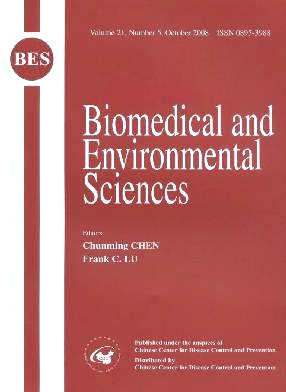Experimental Study of Cell Migration and Functional Differentiation of Transplanted Neural Stem Cells Co-labeled with Superparamagnetic Iron Oxide and Brdu in an Ischemic Rat Model
-
Key words:
- Stem cell transplantation /
- Magnetic resonance imaging /
- Staining and Labelling /
- Cell migration /
- Cell differentiation
Abstract: Objective To explore the migration of transplanted neural stem cells co-labeled with superparamagnetic iron oxide (SPIO) and bromodeoxyuridine (Brdu) using the 4.7T MR system and to study the cell differentiation with immuno-histochemical method in ischemic rats. Methods Rat neural stem cells (NSCs) co-labelled with SPIO mediated by poly-L-lysine and romodeoxyuridine (BrdU) were transplanted into the unaffected side of rat brain with middle cerebral artery occlusion (MCAO). At weeks 1, 2, 3, 4, 5, and 6 after MCAO, migration of the labelled cells was monitored by MRI. At week 6, the rats were killed and their brain tissue was cut according to the migration site of transplanted cells indicated by MRI and subjected to Prussian blue staining and immunohistochemical staining to observe the migration and differentiation of the transplanted NSCs. Results Three weeks after transplantation, the linear hypointensity area derived from the migration of labelled NSCs was observed by MRI in the corpus callosum adjacent to the injection site. Six weeks after the transplantation, the linear hypointensity area was moved toward the midline along the corpus callosum. MRI findings were confirmed by Prussian blue staining and immunohistochemical staining of the specimen at week 6 after the transplantation. Flourescence co-labelled immunohistochemical methods demonstrated that the transplanted NSCs could differentiate into astrocytes and neurons. Conclusion MRI can monitor the migration of SPIO-labelled NSCs after transplantation in a dynamical and non-invasive manner. NSCs transplanted into ischemic rats can differentiate into astrocytes and neurons during the process of migration.
| Citation: | WEN-ZHEN ZHU, XIANG LI, JIAN-PIN QI, ZHOU-PING TANG, WH WANG, LI WEI, HAO LEI. Experimental Study of Cell Migration and Functional Differentiation of Transplanted Neural Stem Cells Co-labeled with Superparamagnetic Iron Oxide and Brdu in an Ischemic Rat Model[J]. Biomedical and Environmental Sciences, 2008, 21(5): 420-424. |







 Quick Links
Quick Links
 DownLoad:
DownLoad: